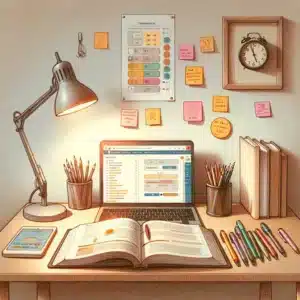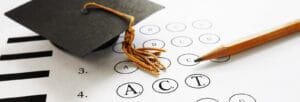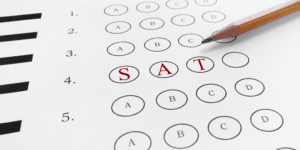Does your child need help to remember the Great Lakes or the planets in order? How often do you find yourself reciting “30 days hath September, April, June, and November. All the rest have 31 except February my dear son. It has 28 and that is fine but in Leap Year it has 29?” You probably don’t even realize how often you use mnemonic techniques!
Mnemonic devices are best described as memory aids or memory techniques. Simply put, mnemonic strategies provide simple ways to remember things. The official definition of mnemonics is the study and development of systems for assisting and improving the memory. We knew back in 1967 from a study by Gerald R. Miller that mnemonics increased recall. He found that students who regularly used mnemonic devices increased test scores up to 77%! The nine types of mnemonic systems are music mnemonics, name mnemonics, word mnemonics, model mnemonics, note organization mnemonics, rhyme mnemonics, image mnemonics, connection mnemonics, and spelling mnemonics.
Want to give your youngster some fun ways to commit lesson content to memory in the elementary grades? She’ll enjoy learning these ten mnemonic tricks spanning several subjects. Use these mnemonic devices to help students memorize some basic facts.
Geography
- If you think about the structures that are near them, you’ll have a nifty clue to the names of the Great Lakes: Use the word HOMES, which stands for Huron, Ontario, Michigan, Erie, and Superior. This is an example of a name mnemonic.
- Here’s a tip to help students remember the direction of longitude (vs. latitude): Unlike the word latitude, longitude has an N, which stands for north, reminding you that longitude runs north and south. This is an example of a connection mnemonic.
- Try learning this song this song to help you memorize the name of the 50 united states in ABC order. This is an example of music mnemonics.
History
- Henry the VIII of England was infamous for the number of women he married — and for their sometimes violent ends! Here’s a rhyme to help you remember what happened to each of King Henry’s wives: Divorced, Beheaded, Died; Divorced, Beheaded, Survived.
- Here’s a different rhyme to help you remember when Columbus found America: In 1492, Columbus sailed the ocean blue. This is an example of rhyme mnemonics.
Language Arts
- To remember what a synonym is, use its first letter as a clue. Both the words synonym and same start with the letter S: A synonym is a word that means the same thing as another word. This is an example of connection mnemonics.
- Use a similar trick to remember the word antonym. Antonym starts with “ant,” just like “anti,” which also means the opposite: An antonym is a word that means the opposite of another word. Again, this is an example of connection mnemonics.
- In English, the 7 coordinating conjunctions are For, And, Nor, But, Or, Yet, So = FANBOYS.
Mathematics
- Recalling the steps of long division is a family project! Just think of these members of a family: Dad, Mom, Sister, Brother, Rover. They represent the process of long division: Divide, Multiply, Subtract, Bring Down, Remainder. This is an example of word mnemonics.
- Here’s a funny reminder phrase for letters and values of Roman numerals (in value order): I Value Xylophones Like Cows Dig Milk, which stands for I=1, V=5, X=10, L= 50, C=100, D=500, M=1,000. This is another example of word mnemonics.
- The order of operations for math is Parentheses, Exponents, Multiply, Divide, Add, and Subtract = Please Excuse My Dear Aunt Sally.
Music
When learning to read sheet music, you can remember which notes are which with these two tricks:
- The notes in the spaces on the treble staff are as plain as the nose on your F-A-C-E!
- Kids who behave themselves can always identify the notes on the lines of the treble staff because they know Every Good Boy Deserves Fun.
Science
- To recall the colors of the rainbow — Red, Orange, Yellow, Green, Blue, Indigo, Violet — think of this quick history lesson: Richard Of York Gave Battle In Vain, or the name “Roy G. Biv.” This technique uses the first letter of each word to assist with memorization and is an example of a name mnemonic device.
- To name the planets of our solar system — Mercury, Venus, Earth, Mars, Jupiter, Saturn, Uranus, Neptune, and optional Pluto — one of these mouth-watering phrases will help: My Very Educated Mother Just Served Us Nine Pizzas (including Pluto), or My Very Excited Mother Just Served Us Nachos (without Pluto). Again, this technique uses the first letter of each word to assist with memorization and is an example of a word mnemonic device.
Spelling
- Think of these two related definitions when you want to know whether to use the spelling “principal” or “principle”: The principal of your school is your PAL. A principle is a RULE he wants you to follow. Each word ends with the same letters as its definition. This is an example of a spelling mnemonic.
- “Dessert,” the noun for something sweet after dinner, and “desert,” the verb for abandoning someone or something, sound the same. To tell them apart, remember: We always want seconds of a sweet treat — that’s why “dessert” has two Ss. When everyone runs away from someone, that person is alone — and that’s why “desert” has only one S.
- Sometimes, it’s helpful to use mnemonics to memorize how to spell the new word of the day like the one below:
- Arithmetic: A Rat In The House May Eat The Ice Cream
- Remember “I before e except after c or when sounding like a in neighbor and weigh”? This is an example of a spelling mnemonic combined with a rhyme mnemonic.
- On a simpler note, many children learn the ABCs by singing the ABC song. This is an example of music mnemonics.
Sources:
Hayden, K. (2014, May 27). Memorization Help for Students: A List of Helpful Mnemonic Devices. Retrieved November 11, 2014, from Bright Hub Education
Karim, C. (2014, January 1). Memory Tricks. Retrieved November 11, 2014, from Let Kids Lead




